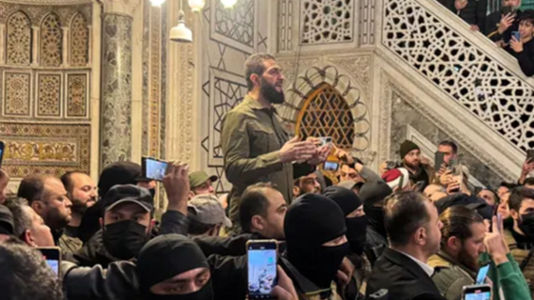Abu Mohammed al-Golani, leader of Hayat Tahrir al-Sham (HTS), has worked for years to distance himself from his extremist past. He now presents himself as a more moderate figure, focusing on state-building and pluralism. Known for his role in Syria’s civil war, al-Golani has transitioned from being a jihadist linked to al-Qaida to a leader advocating for a peaceful future.
Key Role in Assad’s Downfall
Al-Golani’s group has been a major force in the insurgency that led to President Bashar Assad’s downfall. On Sunday, Assad’s regime collapsed after a rebel offensive seized control of Damascus. The fall of Assad’s regime raised questions about Syria’s future, with many ethnic and religious groups fearing the rise of Sunni Islamist extremists.
Building Influence in Idlib
Although al-Golani has stayed out of the public eye since the fall of Damascus, his influence remains strong. His group, which was once part of al-Qaida’s Nusra Front, has gained strength by eliminating rivals and consolidating control in northwestern Idlib province. There, al-Golani created a de facto government and gained support from local tribes and communities. Over time, he shed his image as a hardline militant.
From Al-Qaida to HTS Leader
Al-Golani’s shift from an al-Qaida-linked fighter to HTS leader has been strategic. In 2016, he broke ties with al-Qaida and renamed his group to Jabhat Fateh al-Sham, later becoming Hayat Tahrir al-Sham. This allowed him to consolidate power and form alliances with various ethnic and religious groups, which had previously been excluded by extremists.
Vision for Syria’s Future
In recent interviews, al-Golani emphasized the need for inclusive institutions in Syria. He even suggested his group could dissolve after Assad’s fall. “Syria deserves a system where decisions are made by institutions, not one leader,” he stated in a CNN interview. His current image aims to lead Syria away from the violent ideologies of his past.
Syria’s Uncertain Future
Despite his rebranding, Syria remains fractured. International powers are vying for influence, and al-Golani’s future role as a leader is uncertain. In the coming months, he will face significant challenges as he attempts to guide the country into a new era.
The Collapse of Assad’s Regime
The Syrian government fell on Sunday after a quick rebel offensive took over Damascus. This marked the end of the Assad family’s 50-year rule. Syrian state television aired a statement from a group of men who declared that Assad had been overthrown. They also announced that all prisoners held in jails had been freed.
Opposition’s Call for Unity
The group, known as the Operations Room to Conquer Damascus, urged opposition fighters and citizens to preserve the institutions of the “free Syrian state.” This call to action emphasized the need for unity in rebuilding Syria after Assad’s fall.














